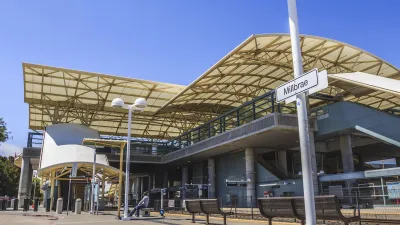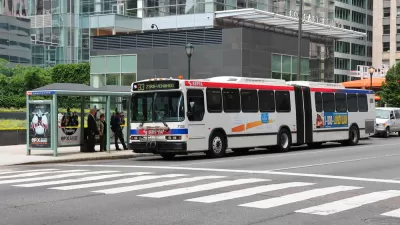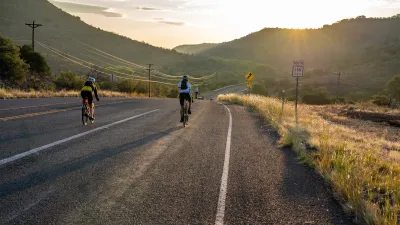In many parts of the city located on higher ground than Lower Manhattan, the lights are on and the flood waters have receded. But New York's transportation network is struggling to reconnect the city's business centers with commuters.
Three days after superstorm Sandy struck New York, the city's public transit system, which 31.1% of commuters in the greater metro area utilize daily, is crawling back to life. Matt Flegenheimer and John Leland provide an update on the recovery of the regional transportation system, as New Yorkers seek a return to some modicum of normalcy.
"[W]ith the return of some services on Thursday," write Flegenheimer and Leland, "commuters were hopeful
they would experience less of what they encountered on Wednesday, when
bus rides were free but still unappealing as they grew overstuffed with
passengers and often bypassed waiting commuters, unable to take on more."
"Still, navigating transportation on the streets seemed to require the
most diplomacy and luck as commuters adjusted to new rhythms of supply
and demand...The effects of the storm will take time to unwind, with crawling
traffic, half-mile lines at suburban gas stations and city buses stuffed
beyond capacity."
For constant updates on the status of the region's transportation network, Transportation Nation's Transit Tracker is a great resource.
FULL STORY: M.T.A.Waives Fares; Restrictions on Bridges in New York

Trump Administration Could Effectively End Housing Voucher Program
Federal officials are eyeing major cuts to the Section 8 program that helps millions of low-income households pay rent.

Planetizen Federal Action Tracker
A weekly monitor of how Trump’s orders and actions are impacting planners and planning in America.

Ken Jennings Launches Transit Web Series
The Jeopardy champ wants you to ride public transit.

Rebuilding Smarter: How LA County Is Guiding Fire-Ravaged Communities Toward Resilience
Los Angeles County is leading a coordinated effort to help fire-impacted communities rebuild with resilience by providing recovery resources, promoting fire-wise design, and aligning reconstruction with broader sustainability and climate goals.

When Borders Blur: Regional Collaboration in Action
As regional challenges outgrow city boundaries, “When Borders Blur” explores how cross-jurisdictional collaboration can drive smarter, more resilient urban planning, sharing real-world lessons from thriving partnerships across North America.

Philadelphia Is Expanding its Network of Roundabouts
Roundabouts are widely shown to decrease traffic speed, reduce congestion, and improve efficiency.
Urban Design for Planners 1: Software Tools
This six-course series explores essential urban design concepts using open source software and equips planners with the tools they need to participate fully in the urban design process.
Planning for Universal Design
Learn the tools for implementing Universal Design in planning regulations.
Ada County Highway District
Clanton & Associates, Inc.
Jessamine County Fiscal Court
Institute for Housing and Urban Development Studies (IHS)
City of Grandview
Harvard GSD Executive Education
Toledo-Lucas County Plan Commissions
Salt Lake City
NYU Wagner Graduate School of Public Service





























